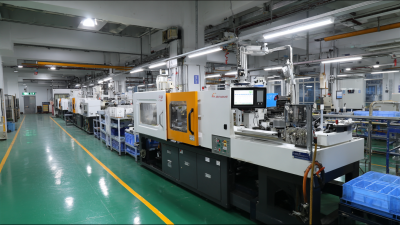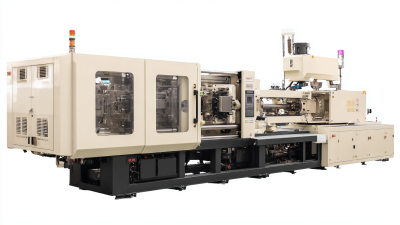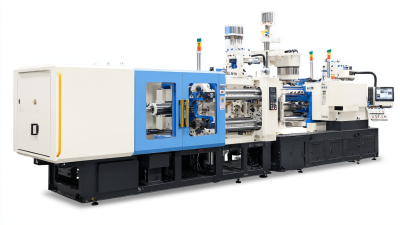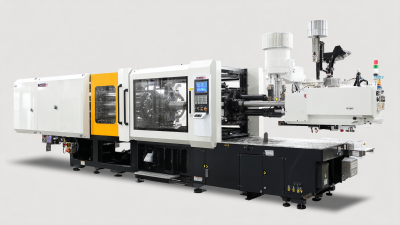Comparing Efficiency and Cost: Mini Plastic Injection Molding Machines Vs. Traditional Methods
In the realm of manufacturing, the choice between mini plastic injection molding machines and traditional methods is becoming increasingly crucial for businesses striving for efficiency and cost-effectiveness. According to a recent report by Grand View Research, the global injection molding market is projected to reach $345.2 billion by 2027, with mini plastic injection machines gaining popularity due to their ability to produce intricate parts with minimal waste. These compact machines not only reduce energy consumption by up to 50% compared to larger counterparts but also enable smaller businesses and startups to enter the market with lower capital investment. As companies seek to optimize production processes while keeping costs down, understanding the comparative advantages of mini plastic injection molding machines versus traditional methods is essential for making informed decisions that can significantly impact their bottom line.

Understanding Mini Plastic Injection Molding Machines and Their Advantages
Mini plastic injection molding machines have emerged as a revolutionary solution for businesses seeking efficiency and cost-effectiveness in manufacturing. Unlike traditional methods, which often require significant investment in both equipment and time, mini machines offer a more accessible entry point for small to medium-sized enterprises. These machines are designed to cater to smaller production runs, allowing manufacturers to create high-quality plastic parts without the need for extensive setup or large-scale machinery.
One of the notable advantages of mini plastic injection molding machines is their energy efficiency. They consume less power compared to their larger counterparts, which not only reduces operational costs but also minimizes the environmental impact. Furthermore, the compact design of these machines means they occupy less space, making them ideal for businesses with limited floor area. With faster cycle times and the ability to produce intricate designs, mini machines empower manufacturers to respond swiftly to market demands while maintaining high standards of quality.
Traditional Injection Molding Methods: Challenges and Limitations
Traditional injection molding methods have long been the backbone of the plastic manufacturing industry, yet they come with significant challenges and limitations. One of the most pressing issues is related to the production stability, which can be significantly impacted by environmental factors and operational disturbances. According to industry reports, approximately 25% of production time can be lost due to these interruptions, leading to a substantial increase in manufacturing costs and operational inefficiencies.
Moreover, traditional methods are notorious for generating excessive scrap materials, with estimates suggesting that up to 30% of materials can end up as waste. This not only raises costs but also raises sustainability concerns as industries strive to reduce their environmental footprint. The lengthy lead times and high costs associated with developing physical prototypes further exacerbate these challenges, magnifying the need for more efficient and cost-effective solutions.

Cost Comparison: Mini Machines vs. Conventional Methods
When evaluating the costs associated with plastic injection molding, mini machines present a compelling alternative to traditional methods. Mini plastic injection molding machines are typically more affordable upfront, making them an attractive option for startups and small businesses. The lower initial investment allows companies to enter the market without the financial burden commonly associated with larger, conventional machinery. Additionally, these mini machines require less energy to operate, which leads to reduced utility bills over time.
However, the cost comparison doesn't end with the purchase price. Traditional injection molding methods often come with significant maintenance and operational costs due to their complexity and size. In contrast, mini machines are designed for efficiency and ease of use, often resulting in lower maintenance expenses. Moreover, they are versatile and capable of producing smaller batches, further minimizing waste and maximizing return on investment. Overall, for businesses looking to optimize their production costs, mini plastic injection molding machines offer a practical and economical solution.

Efficiency Analysis: Speed and Output of Mini Molding Technologies
The efficiency of mini plastic injection molding machines is reshaping the manufacturing landscape. According to a report by Grand View Research, the mini injection molding market is expected to grow at a CAGR of 6.2% from 2023 to 2030, driven by the increasing demand for precision and low-volume production. Mini molding technologies offer significantly faster cycle times compared to traditional methods, with an average cycle time reduction of 30-50%. This acceleration is crucial for industries where speed to market is essential, such as consumer electronics and medical devices.
Moreover, mini molding machines typically yield higher output within a shorter timeframe. A study conducted by Plastics Technology reports that these machines can produce up to 90% more parts in the same production window when compared to conventional molding setups. The compact design of mini molding machines not only enhances efficiency but also reduces energy consumption, allowing manufacturers to save on operational costs. This combination of faster output and reduced energy usage positions mini plastic injection molding as a remarkably efficient alternative to traditional manufacturing methods, appealing to businesses looking to optimize their production processes.
Real-World Applications: When to Choose Mini Machines over Traditional Methods
In the ever-evolving landscape of manufacturing, the choice between mini plastic injection molding machines and traditional methods hinges on a variety of applications. Mini machines are particularly advantageous for small-batch production, prototyping, or when flexibility is paramount. Their compact size and lower investment costs make them ideal for startups and businesses testing new product designs without committing to large volumes. For instance, companies in the toy or consumer goods sectors can benefit from rapid iterations, allowing them to launch products faster and respond swiftly to market demands.
On the other hand, traditional injection molding methods excel in high-volume production where efficiency and consistency are critical. Industries such as automotive, where durability and precision are non-negotiable, often rely on these conventional machines to maintain quality over extensive runs. However, businesses should assess the specific needs of their projects; if the aim is to produce niche products or test market innovations, mini machines provide the flexibility and cost-effectiveness that traditional methods may lack. In this way, understanding the distinct advantages of each option enables informed decisions tailored to the unique needs of varying projects.
Related Posts
-

How to Choose the Right Moulding Plastic Machine for Your Manufacturing Needs
-

Exploring Innovative Alternatives to Plastic Injection Machines for Modern Manufacturing
-

Evaluating the Best Large Injection Molding Machines for Global Buyers in 2025 Industry Trends and Insights
-

Maximizing Production Efficiency with Advanced Plastic Molding Machines
-

Global Quality Revolution How Chinese Moulding Plastic Machines Capture International Markets
-

How to Choose the Best Home Plastic Injection Molding Machine for Your DIY Projects
